What I read: This piece about the new Star Wars series, detailing the racist abuse that one of the actors has received.
What I learned: As our movies and TV shows continue to diversify, we can expect racists to become more frightened and yet more abusive.
The new miniseries, “Obi-Wan,” premiered on Disney+ in late May and caused a stir almost immediately. Not only does it bring the Star Wars story closer in time to the moment when the first movie began, but also it has introduced a brand-new villain: the ruthless Inquisitor, Reva Sevander. Incredibly athletic, intimidating, and remorseless, the character is played by a Black woman named Moses Ingram.
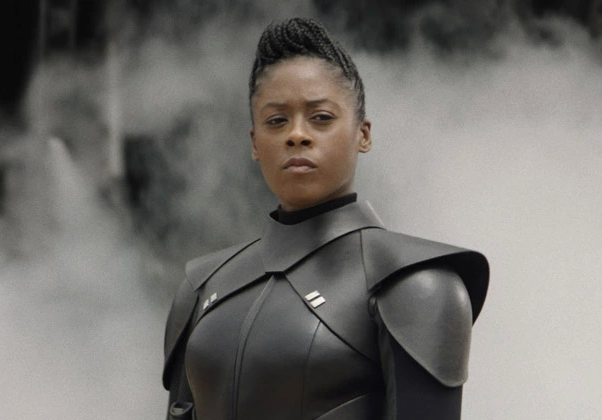
Ingram took to Instagram last week and revealed, in a personal video, that she’s been targeted by hundreds of racist attacks since the series premiere. The post expired, as all Instagram stories are only active for 24 hours, but the actress said: “I question my purpose in even being here in front of you saying that this is happening. I think the thing that bothers me, is this feeling that I’ve had inside of myself — which no one has told me — but this feeling that I’ve just got to shut up and take it. That I’ve just got to grin and bear it.”
https://twitter.com/i/status/1531516650465402880
She also posted screenshots of some of the abuse she’s received:

In response, the star and co-executive producer of the show, Ewan McGregor, posted a video saying that the abuse sickened him and, “as the leading actor in the series, as the executive producer on the series, that we stand with Moses… We love Moses, and if you’re sending her bullying messages, you’re no Star Wars fan in my mind.”
Star Wars also tweeted out support for Ingram, saying, “There are more than 20 million sentient species in the Star Wars galaxy, don’t choose to be a racist.”
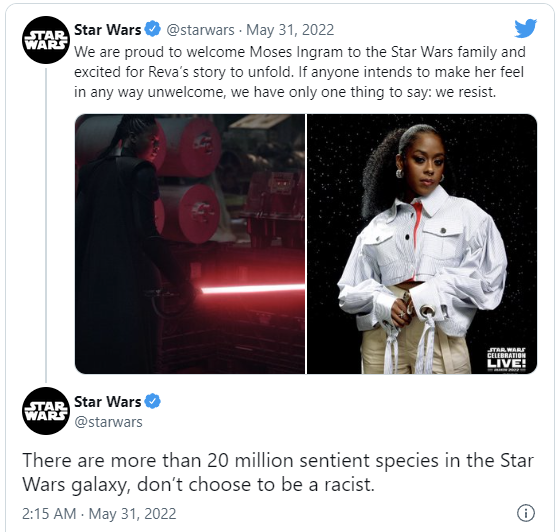
In Eric Deggans’ op-ed on the racist attacks, he wondered why Star Wars and Disney waited until Ingram spoke up about racism before voicing support for her. So far, every actor of color who’s appeared in a Star Wars film or TV series in a significant role has been subjected to a flood of racist harassment and even threats. A few years ago, Kelly Marie Tran deleted her social media accounts because the abuse was so overwhelming, saying, “This isn’t good for my mental health. I’m obviously going to leave this.”
John Boyega dealt with a similar situation when the trailer for the 2015 film, “Star Wars: The Force Awakens,” was released and the world gasped as a Stormtrooper removed his helmet to reveal a Black man’s face inside of it. Boyega was immediately inundated with messages calling him horrible names and threatening violence.
Star Wars: The Force Awakens Official Teaser #2
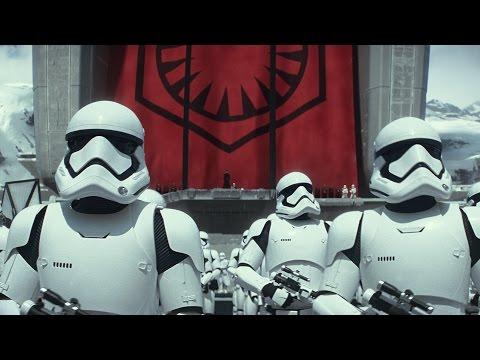
He told one interviewer, “It was unnecessary. I’m in the movie, what are you going to do about it? You either enjoy it or you don’t. I’m not saying get used to the future, but what is already happening. People of color and women are increasingly being shown on-screen. For things to be whitewashed just doesn’t make sense.”
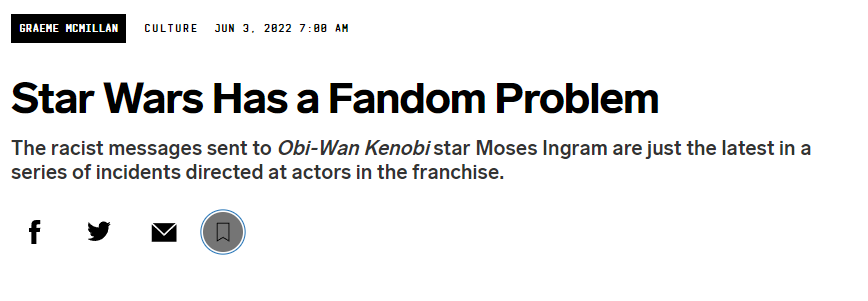
https://www.wired.com/story/star-wars-fandom-racism/

https://www.motherjones.com/mojo-wire/2022/06/star-wars-nerds-black-actress-moses-ingram/
In the piece that originally caught my eye, Deggans suggests that readers look into a sociological theory called “group threat theory,” and that’s really what I want to talk about today. Not only does it relate to the racist attacks on Moses Ingram and any other actor of color who is cast in a fan-favorite movie (Star Wars, Star Trek, Ghostbusters, Hunger Games, Harry Potter, etc.), but it’s also relevant in trying to understand the anger and hatred currently threating American society.
Group threat theory suggests that the larger the size of a minority group, the more threatened the majority will feel by them. It originated in work by sociologist Herbert Blumer
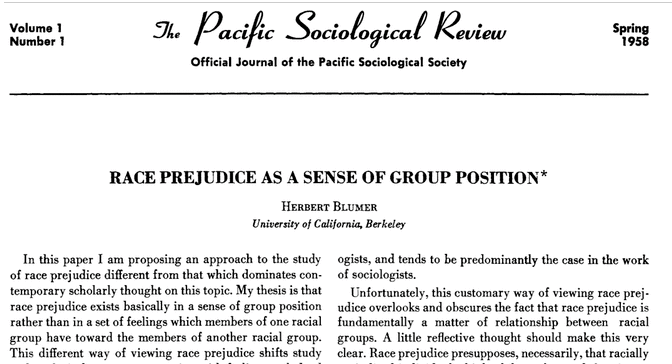
https://journals.sagepub.com/doi/abs/10.2307/1388607?journalCode=spxa
and ethnologist Hubert Blalock.
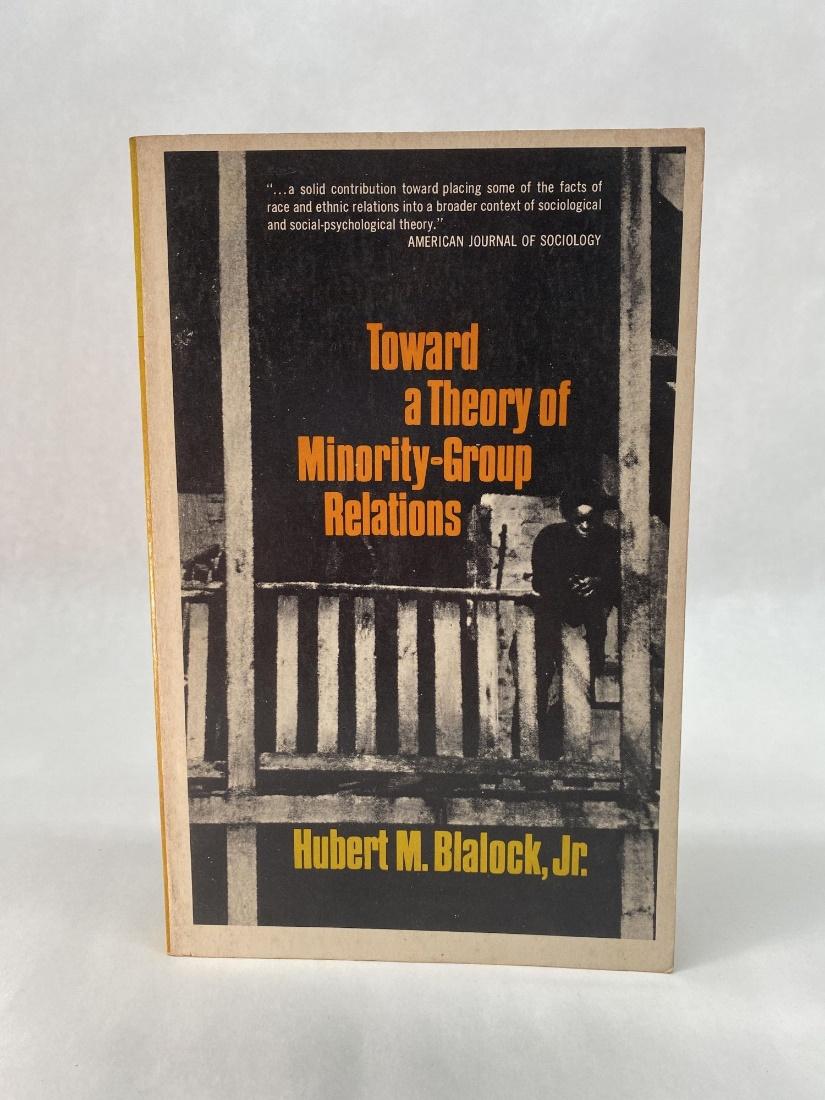
Essentially, when the size of a minority group begins to increase, Blumer and Blalock found that members of the dominant group worked harder to establish their own superiority and protect their privileges out of a fear that the minority group was threatening their position. Many studies over the past half century have strengthened the case for group threat theory, some research even showing that it doesn’t even matter if the minority group is actually growing or if the dominant group just thinks their numbers are swelling.
Keep in mind that there is also convincing research that seems to prove the opposite of group threat theory. Scientists have demonstrated again and again that more frequent interactions with members of a minority group can break through stereotypes and bias. This has been called the “contact hypothesis” or “intergroup contact theory” in the seminal work on the subject from 1954.

Social psychologist Gordon W. Allport wrote his book after years of study on the effects of desegregation, especially in schools and the military.
But contact theory doesn’t actually conflict with group threat theory, as scientists have always been careful to say that certain conditions must be met in order to make a meeting between members of different racial groups productive and positive. Between 1949 and 1952, scientists studied the relationships between tenants in several public housing projects and concluded that, in order for interactions to be non-hostile, members of different races must occupy “the same or equivalent roles in the situation,” share characteristics like education, age, gender or socioeconomic status, believe they have common interests or goals, and meet at a time when the “social climate […] is not unfavorable to interracial association.”
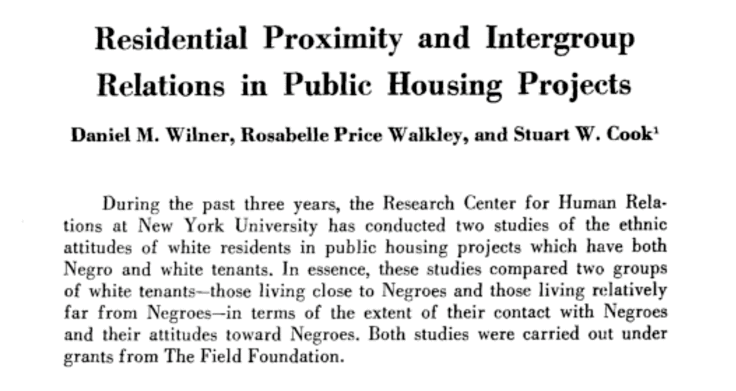
https://spssi.onlinelibrary.wiley.com/doi/10.1111/j.1540-4560.1952.tb01593.x
Here’s a table outlining the four conditions that must be met in order for interactions between different races to result in reduced prejudice:
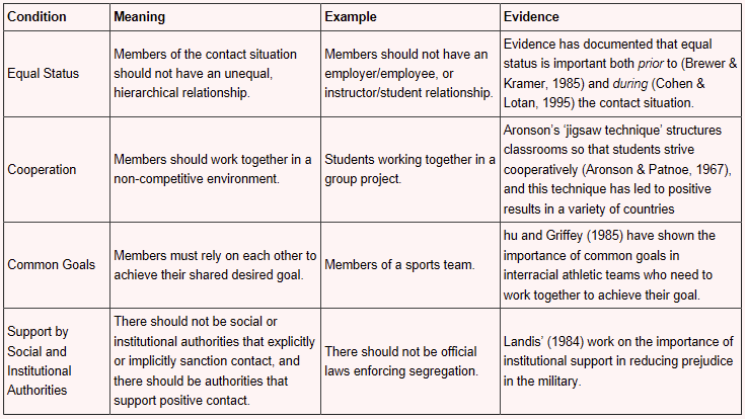
If those conditions are met—and that’s a relatively high bar—then we can expect to see a reduction in prejudice when a minority group interacts regularly with members of a dominant group. If those conditions are not met—perhaps there is no equal status because one person is a software programmer, and the other is a maintenance worker—then those interactions can lead to more entrenched prejudice and racism.
I think group threat theory is a useful tool when trying to understand the toxic attacks of Star Wars fans against any non-white actor cast in the films. Over the course of the first three movies, there was only one non-white actor: Billy Dee Williams, who played the debonair but unreliable Lando Calrissian (I don’t count James Earl Jones, as he was providing the voice of a character who was white). Otherwise, every single human in the Star Wars universe was white. One Black actor among an otherwise entirely white universe is not threatening.
The reason we are seeing a rise in the number of racist attacks on actors in Star Wars films is that the number of non-white characters is increasing; the numbers are growing to the point where members of the dominant group are starting to feel threatened. Because of that, they lash out in an effort to intimidate members of the outgroup and somehow protect their position.
While representation in films is important, it will likely not lead to a reduction in prejudice among those whose racism is most entrenched, mostly because the four conditions required by contact theory are not present. There is no equal status or cooperation.
Deggans is right about one thing, though: production companies like Disney must be proactive in the future. A reduction in prejudice only occurs, according to sociologists, when there is clear support from institutional authorities. In this case, that would be Disney and the Star Wars operation. Casting non-white actors is a first step. The necessary second step is full-throated support that comes before actors are targeted with abuse, not after.

